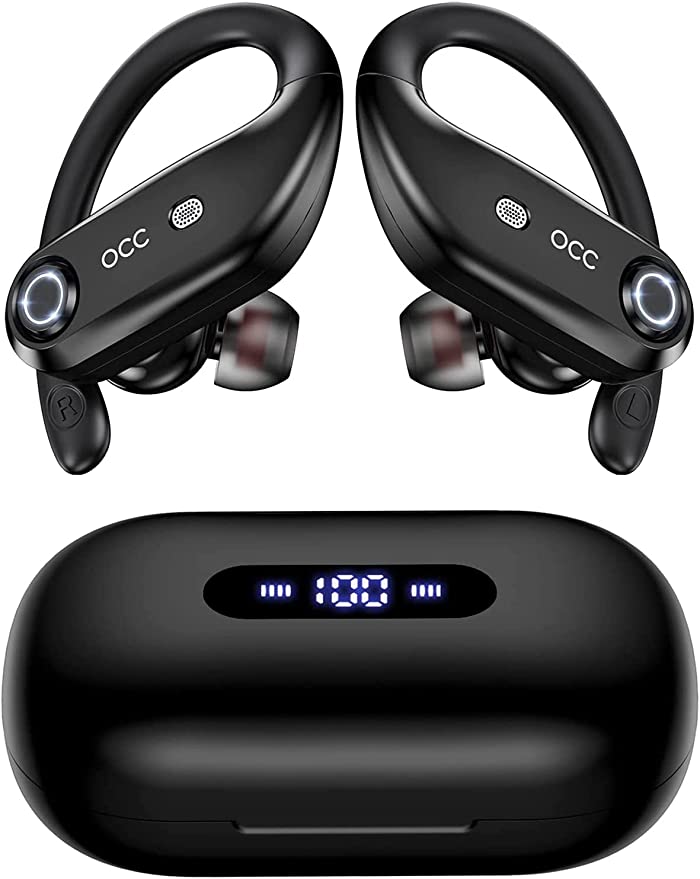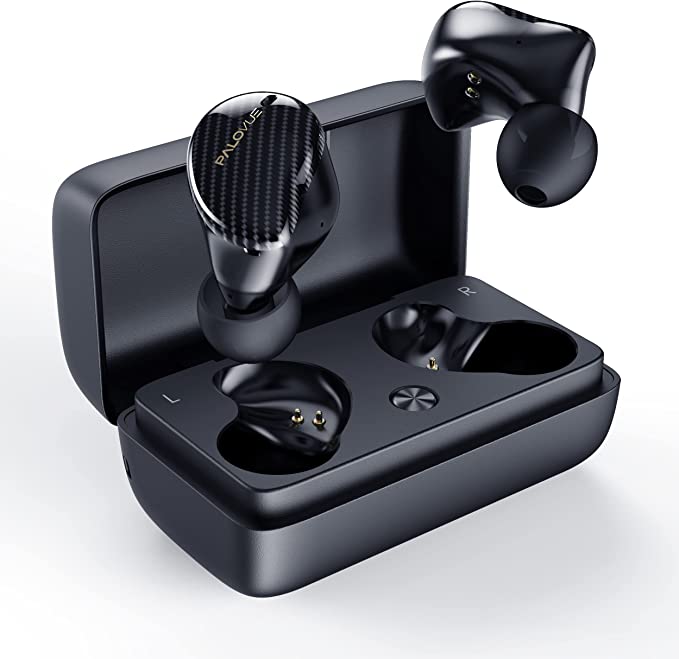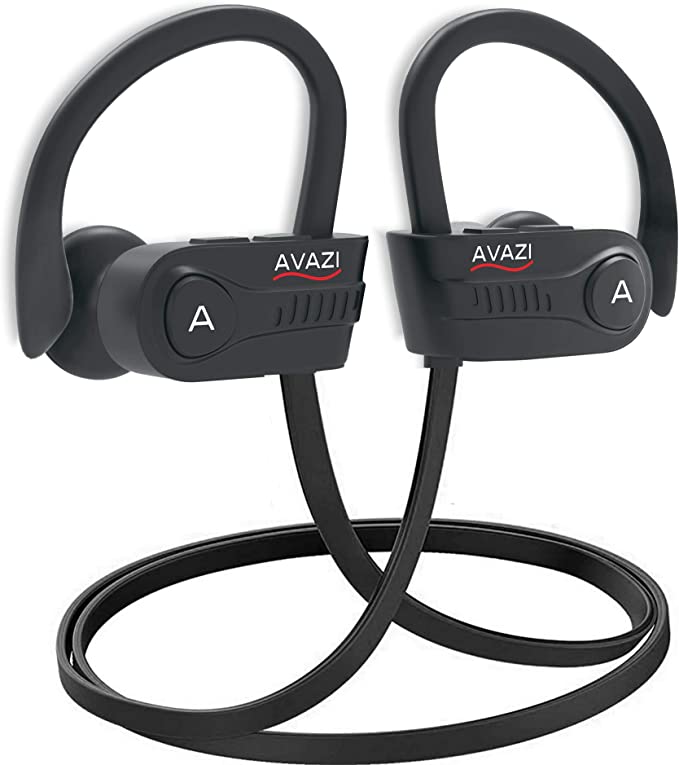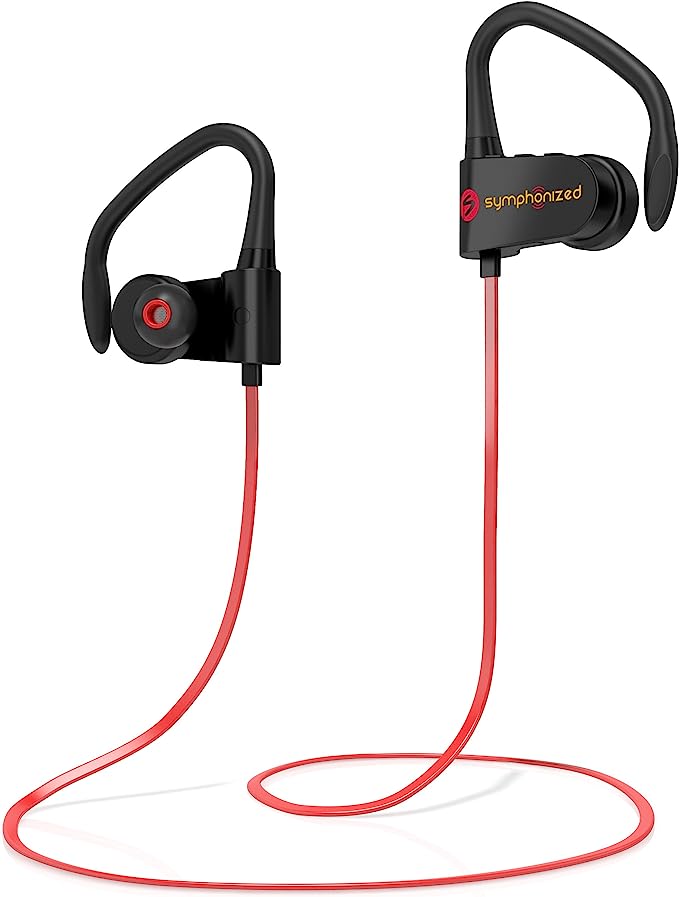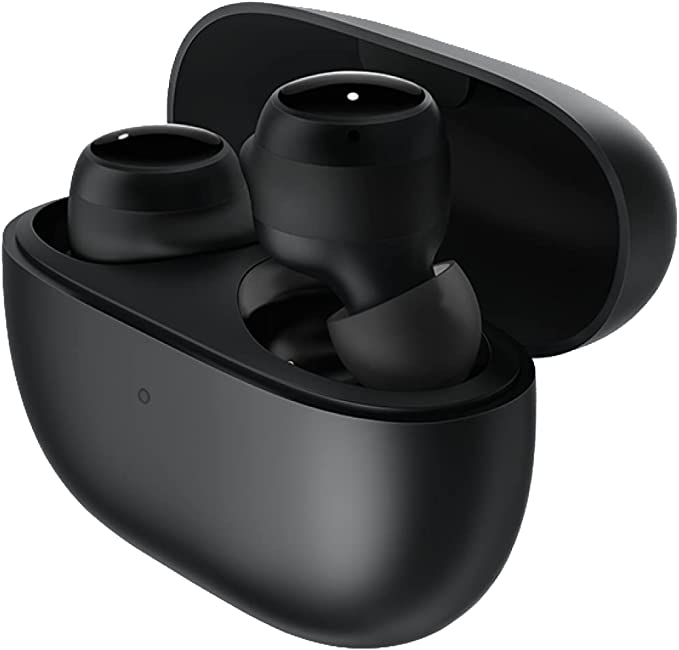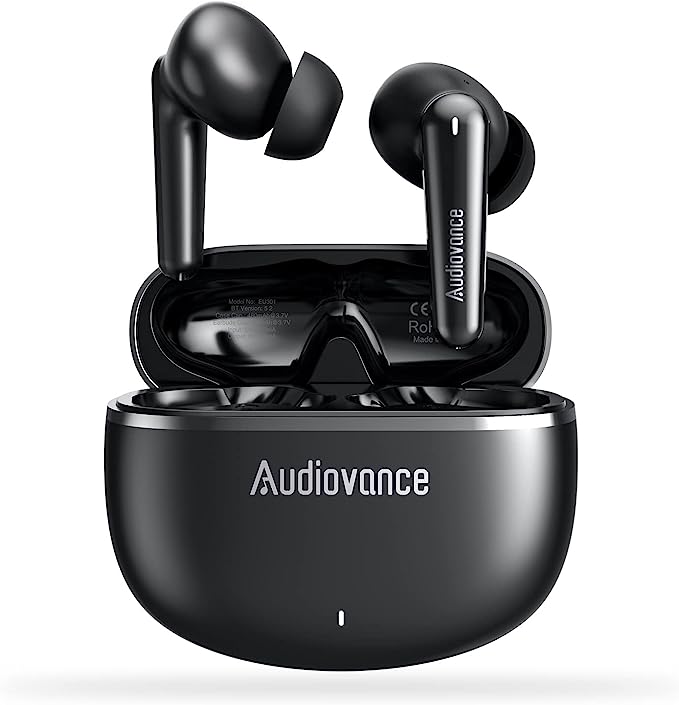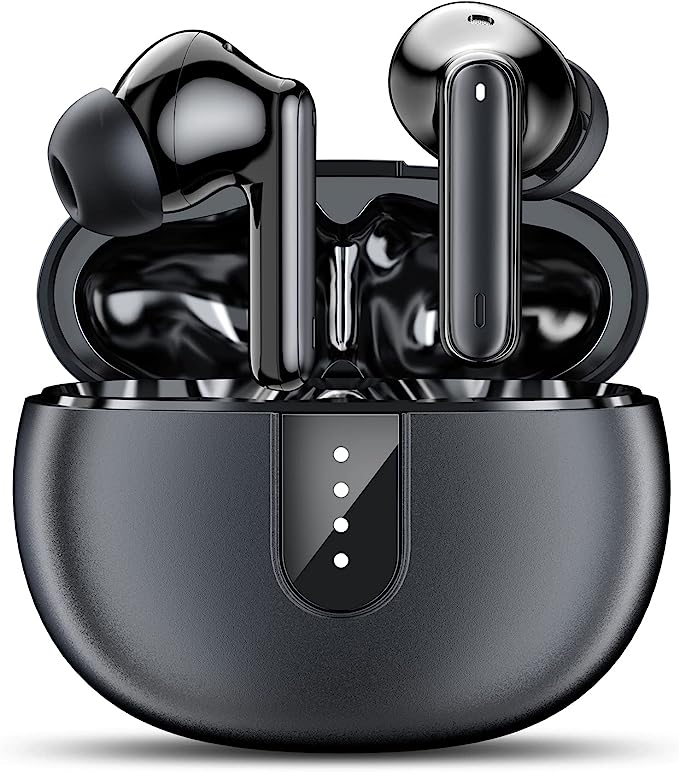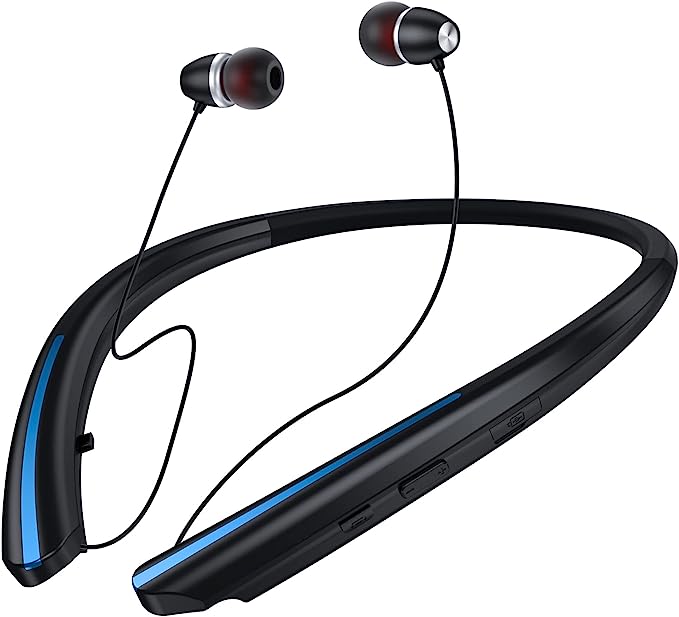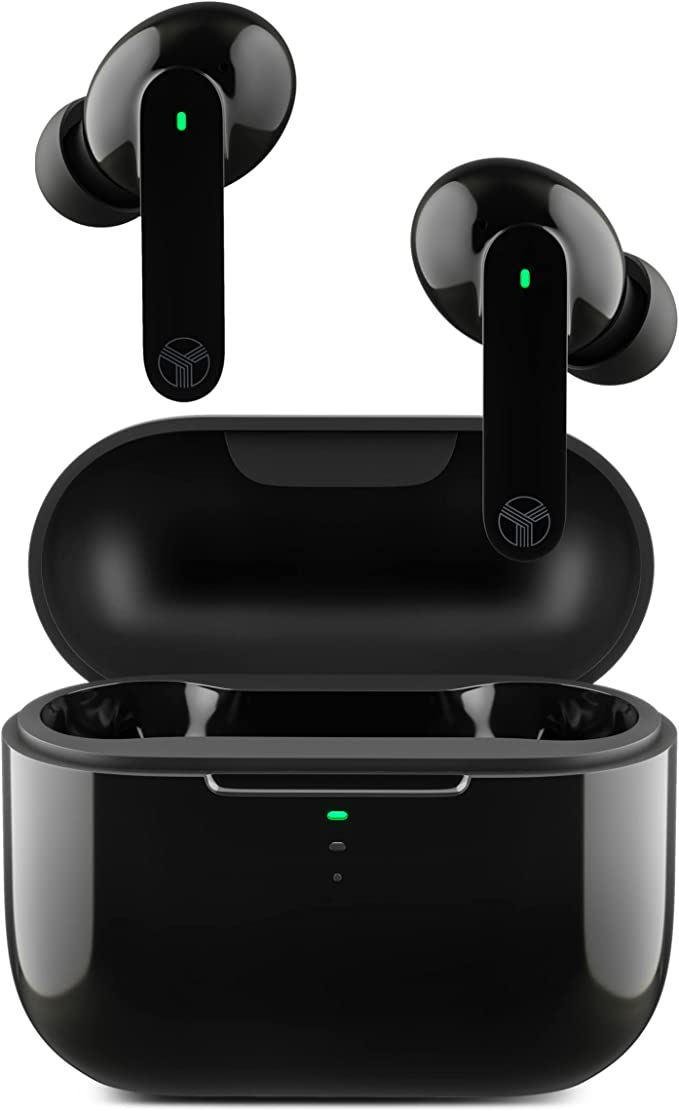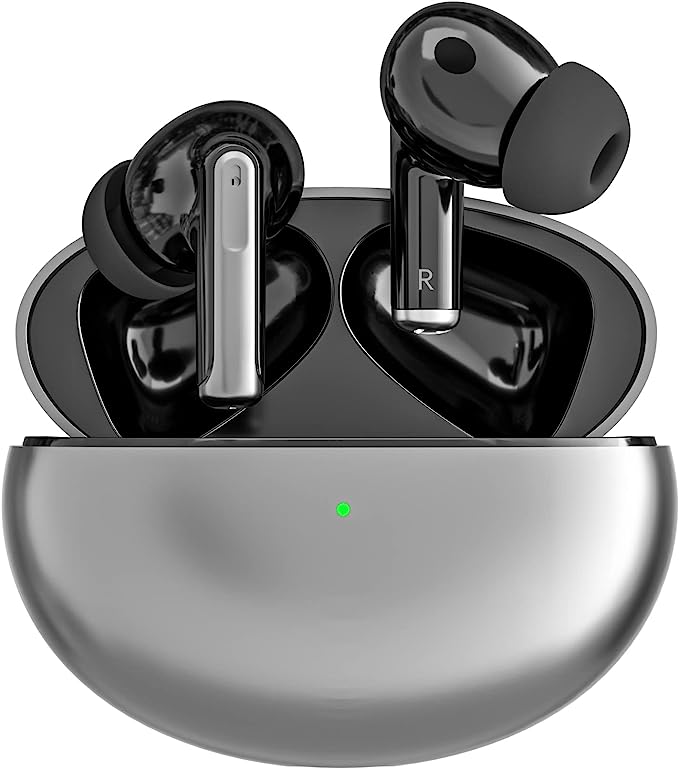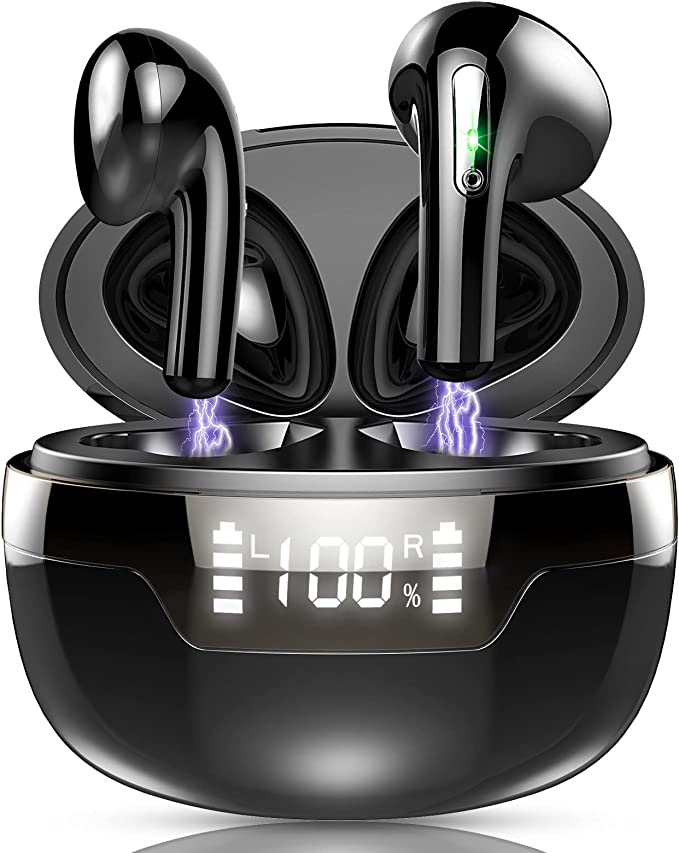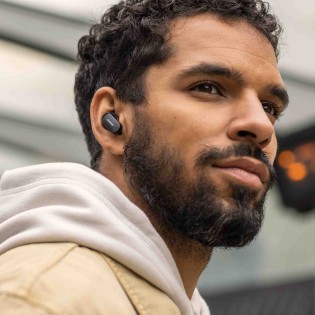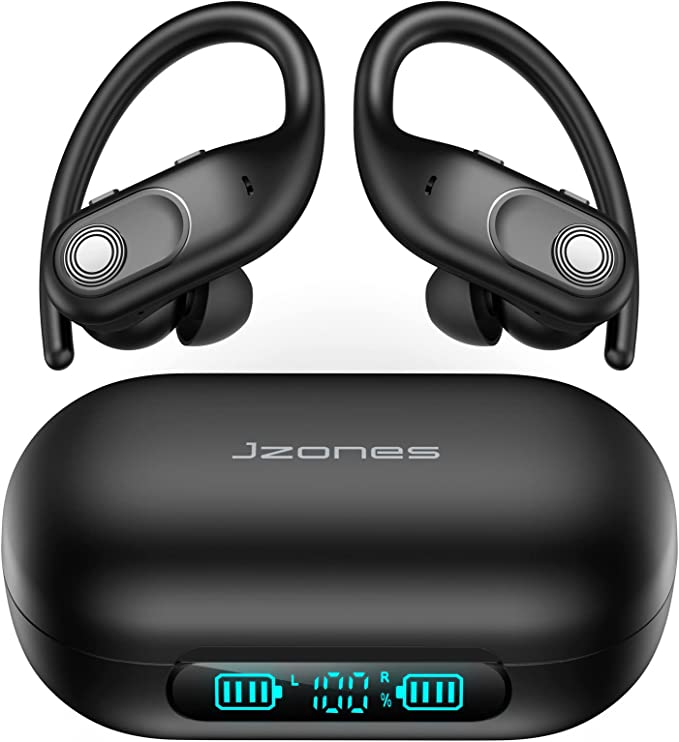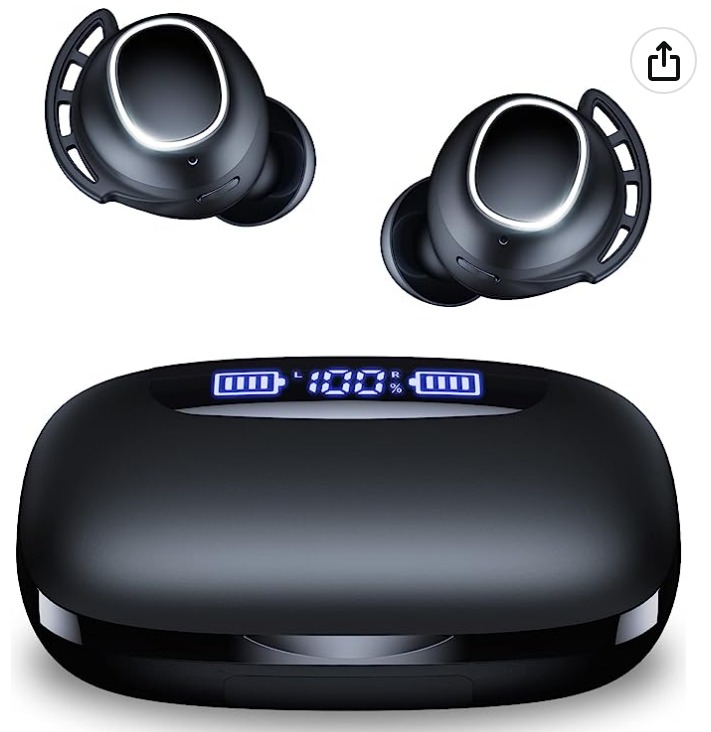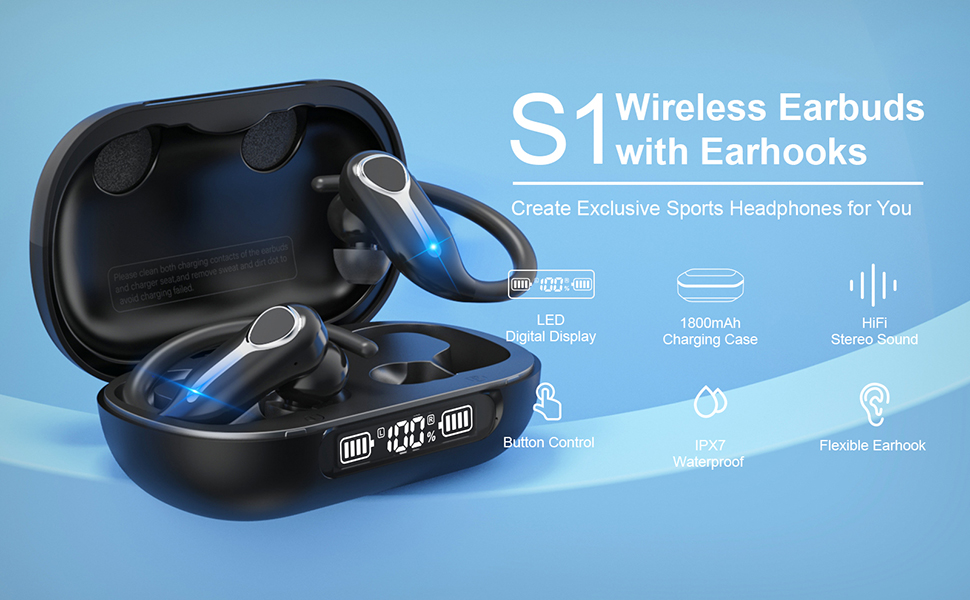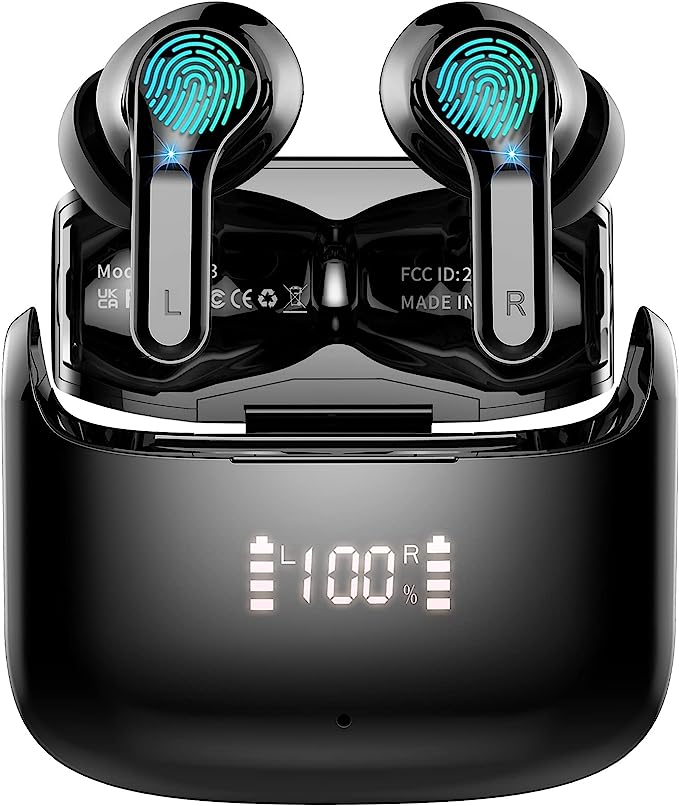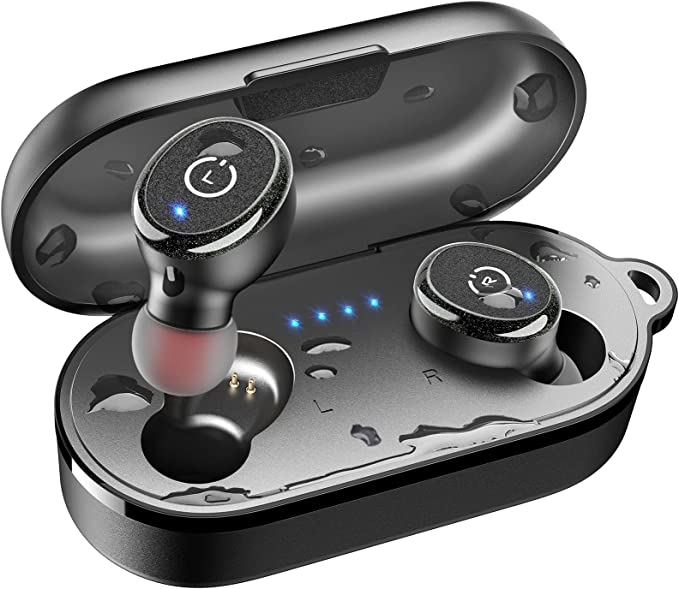GUANGPONE Q53 Bluetooth Earbuds : Budget-Friendly Bluetooth Earbuds for Sports
Update on May 30, 2025, 2:30 p.m.
In our ceaselessly moving world, the quest for the perfect audio companion is a modern-day epic. We seek not just sound, but a seamless extension of ourselves – a reliable, comfortable, and enduring partner for our commutes, workouts, and moments of focused solitude. The GUANGPONE Q53 Bluetooth Sport Earbuds, while unassuming in their market position, offer a fascinating window into how sophisticated scientific and engineering principles are meticulously woven into the fabric of accessible, everyday technology. This isn’t just about a product; it’s an exploration of the applied science that aims to keep pace with our dynamic lives. So, let us embark on a journey to dissect the ergonomic ingenuity, acoustic heart, communication clarity, power resilience, elemental fortitude, and wireless agility that define these sport-focused earbuds.

The Architecture of Adherence: Crafting a Fit That Moves With You
For anyone who’s ever had an earbud dislodge mid-sprint or during a crucial set, the frustration is palpable. It shatters focus and flow. The GUANGPONE Q53, according to its product description, confronts this universal challenge with “sports bluetooth earbuds with soft flexible and secure ear hook, which make sure they’ll stay comfortabley firm in place and won’t fall off.” This design isn’t accidental; it’s a direct application of ergonomics and biomechanics.
Ergonomics, at its core, is the science of fitting the task, the equipment, and the environment to the person. Human ears, as wonderfully diverse as a field of wildflowers, present a significant challenge for universal fit. This is where anthropometry, the study of human body measurements and proportions, informs design. The “soft flexible” ear hooks of the Q53 are engineered to accommodate a range of ear shapes and sizes, contouring to the natural curve of the auricle (the external part of the ear). The “secure” aspect comes from how these hooks distribute the earbuds’ minimal weight and counteract the dynamic forces generated during vigorous activity. Imagine the G-forces, albeit small, experienced by an earbud as a runner’s foot strikes the pavement or a HIIT enthusiast performs a burpee. The ear hook acts as an anchor, leveraging the structure of the ear itself to prevent dislodgement.
The material science here is also crucial. The polymers used in these hooks need to be flexible enough to adapt yet resilient enough to maintain their shape and grip over time and through countless flexions. They must also be comfortable against the skin, minimizing irritation during prolonged wear or sweaty conditions. This considered approach to fit is about more than just staying put; it’s about enabling users to immerse themselves in their activity, confident that their audio companion will remain steadfast. One user, Roger Creteau, a construction worker, highlighted this practical benefit in a verified Amazon review, stating, “Excellent fit and sound, i prefer the wrap around ear clips because i work in construction.” His experience underscores how such a design transcends recreational sports, offering stability in physically demanding professional environments as well. The ultimate value? Uninterrupted focus, enhanced comfort for extended listening, and the liberating confidence to move without restraint.

Graphene’s Whisper: The Material Science Behind a Richer Soundscape
What truly breathes life into an earbud, transforming electrical signals into emotive soundscapes? The answer lies in the driver – the tiny speaker within. The GUANGPONE Q53 features 10mm graphene drivers, a choice that speaks volumes about the pursuit of acoustic fidelity, even in budget-conscious designs. To understand why, we must delve into the remarkable world of graphene.
Its discovery by Andre Geim and Konstantin Novoselov at the University of Manchester in 2004, an achievement recognized with the 2010 Nobel Prize in Physics, unveiled a material 교통 a single layer of carbon atoms arranged in a two-dimensional hexagonal lattice. Think of it as an infinitesimally thin sheet of graphite. Graphene is often hailed as a “wonder material” due to its extraordinary properties: it’s about 200 times stronger than steel by weight, incredibly lightweight, an excellent conductor of electricity, and remarkably stiff.
In the context of an audio driver, these properties are a golden ticket. The diaphragm of a speaker needs to vibrate rapidly and precisely to create sound waves.
- Lightness: Graphene’s incredibly low mass means the diaphragm has very little inertia. This allows it to respond almost instantaneously to changes in the audio signal, crucial for reproducing fast transients (like the crack of a snare drum or the pluck of a guitar string) and subtle details in complex musical passages.
- Stiffness: Its exceptional stiffness ensures that the diaphragm moves as a single, unified piston, even at high volumes or when reproducing complex frequencies. This minimizes unwanted breakup, resonance, and distortion, which can muddy the sound. A less stiff material might flex озеро ripple, coloring the sound in undesirable ways.
The combination of these traits allows graphene diaphragms to potentially offer a wider, more accurate frequency response. The product page for the Q53 claims they “Produce Incredible Sound Quality with Deep Bass and Crystal Crisp Treble.” While “incredible” is subjective, the physics of graphene supports the potential for such performance. The “deep bass” arises from the diaphragm’s ability to move significant amounts of air accurately at low frequencies, while “crystal crisp treble” is a product of its rapid, precise movements at high frequencies. This potential for a detailed and dynamic listening experience is what makes graphene an exciting material for audio. One user, “Bbygurl,” vividly captured this impact: “I’d have to catch myself when listening to music, bc they will force me to stop and dance to the boosted bass from time to time!” This isn’t just about technical specifications; it’s about sound that moves you, literally.
The Art of Being Heard: Decoding CVC 8.0 for Crystal-Clear Communication
In our interconnected lives, an earbud’s utility often extends beyond music to voice communication. However, taking a call in a noisy environment can be an exercise in frustration for both parties. The GUANGPONE Q53 incorporates CVC 8.0 (Clear Voice Capture) noise reduction, a technology developed by Qualcomm, aimed squarely at enhancing call clarity.
It’s crucial to distinguish CVC from ANC (Active Noise Cancellation). While ANC is designed to cancel out ambient noise for the listener’s immersion, CVC focuses on improving the quality of the audio transmitted by the microphone. Think of it as giving your voice a clearer path through the noise, so the person you’re speaking to can hear you better.
The science behind CVC 8.0 lies in sophisticated Digital Signal Processing (DSP). The earbuds’ microphones pick up all nearby sounds – your voice, the wind, traffic, surrounding chatter. The CVC algorithm then gets to work. It’s trained to differentiate the characteristic frequencies and patterns of human speech from those of common ambient noises. Imagine a skilled sound engineer at a mixing console, meticulously isolating a vocalist from a noisy band. CVC performs a similar feat in real-time, digitally. It attempts to suppress or attenuate the identified noise signals while preserving and even enhancing the voice frequencies.
The product description for the Q53 states that “CVC8.0 noise reduction reduces ambient noise by 80% making calls clearer.” While the “80%” figure is a manufacturer’s claim and likely dependent on specific test conditions, the underlying principle is sound. By cleaning up the microphone’s input before it’s transmitted, CVC aims to deliver a more intelligible signal to the listener on the other end. Whether you’re navigating a bustling city street while on an important business call, or trying to coordinate with a teammate in a windy park, the goal of CVC is to make your voice stand out from the cacophony, reducing the need for shouts of “Can you hear me now?”

Powering Your Pursuits: The Ecosystem of Endurance and Utility
For any portable electronic device, particularly one designed for an active lifestyle, battery life isn’t just a feature; it’s a cornerstone of its utility. The GUANGPONE Q53 system is described as offering 6 hours of playtime for each earbud on a full charge, with the charging case extending this to a total of up to 48 hours. The case itself houses a 2600mAh battery. This impressive endurance is made possible by the high energy density of modern Lithium-ion or Lithium-polymer batteries, the unsung heroes of our portable tech world. These batteries store a significant amount of electrical energy in a relatively small and lightweight package by managing the flow of lithium ions between an anode and a cathode during charge and discharge cycles.
However, the Q53’s charging case, as per its description, transcends its primary role as a mere power replenisher. It’s an “ecosystem of utility”:
- Emergency Power Bank: “The charge case can be a power bank recharge your phone in an emergency.” With its 2600mAh capacity, the case can offer a crucial lifeline to a smartphone batteria running low. This leverages basic electrical principles: the case’s battery acts as a source, providing a current at a suitable voltage (typically 5V via USB) to charge another device.
- Makeshift Phone Holder: “Open the charge box, it can be used as a phone holder.” This is a simple yet clever mechanical design feature, adding a touch of unexpected convenience for hands-free video viewing or calls when a dedicated stand isn’t available.
- LED Power Display: This feature provides an at-a-glance status of the charging case’s remaining battery, empowering users to manage their power needs proactively and avoid being caught enerji.
This multi-pronged approach to power management – long individual earbud life, substantial case capacity, and bonus utility features – speaks to a design philosophy centered on user autonomy and preparedness. Whether it’s a long-haul flight, a weekend camping trip far from power outlets, or simply the peace of mind knowing you have backup power for your phone, the Q53 system aims to alleviate “battery anxiety” and keep you connected and entertained.
Forged for Activity: The Science of IPX7 Weather and Sweat Resistance
Electronics and water are traditionally antagonists. Yet, for sport-focused earbuds, exposure to moisture – be it profuse sweat during an intense workout or an unexpected downpour on a trail run – is not a matter of ‘if’, but ‘when’. The GUANGPONE Q53 earbuds are equipped with an IPX7 waterproof rating and an additional “waterproof nano-coating,” according to the product information.
Understanding the IP (Ingress Protection) Code is key here. This standard, defined by the International Electrotechnical Commission (IEC) in their document IEC 60529, classifies the degree of protection provided by enclosures of electrical equipment against intrusion from solid objects (like dust) and liquids.
- The first digit (or ‘X’ if not rated or tested for solids) denotes protection against solid particles. In IPX7, the ‘X’ means it’s either not rated for dust ingress or the rating is not relevant to its primary function.
- The second digit, ‘7’ in this case, signifies a high level of water protection. Specifically, an IPX7 rating means the device can withstand immersion in fresh water up to 1 meter deep for a maximum of 30 minutes without harmful effects.
Achieving this level of protection involves a multi-layered engineering approach:
- Precision Mechanical Sealing: The earbud casings must be meticulously designed and assembled with tight tolerances. Gaskets or specialized adhesives are often used at seams and entry points (like charging contacts or microphone ports if not otherwise protected) to create a physical barrier against water molecules.
- Hydrophobic Nano-coating: The mention of a “nano-coating” points to an increasingly common and effective technology. These are ultra-thin, often polymer-based, films applied to surfaces at a nanoscopic level. They create a hydrophobic (water-repelling) surface. Imagine water beading up and rolling off a lotus leaf – that’s the “Lotus Effect,” a natural example of hydrophobicity. These coatings reduce the surface tension between the water and the earbud material, making it difficult for water to adhere or penetrate.
The product description states this design “effortlessly protects the bluetooth earbuds from slight raindrops or sweat during intense workouts” and “can prevent sweat damage.” While IPX7 provides substantial protection, it’s important to note its limitations: it typically applies to fresh water, and doesn’t guarantee protection against corrosive liquids like saltwater, chlorinated pool water, or other chemicals. Nor does it imply suitability for high-pressure water jets. However, for the intended use in sports – deflecting sweat and rain – an IPX7 rating combined with a nano-coating offers robust peace of mind, allowing users to focus on their performance rather than a their gear’s vulnerability.

The Unseen Handshake: Bluetooth 5.3 and Intuitive Interaction
The magic of wireless audio lies in that “unseen handshake” – the seamless, stable connection that delivers your soundtrack or call without the tangle of wires. The GUANGPONE Q53 leverages Bluetooth 5.3 technology, features an “one step connect” auto-pairing process, and incorporates “high-sensitivity touch control.”
Bluetooth technology, overseen by the Bluetooth Special Interest Group (SIG), has evolved significantly since its inception. Bluetooth 5.3, a relatively recent iteration, builds upon its predecessors with several key enhancements relevant to devices like earbuds:
- Improved Energy Efficiency: While not always a dramatic leap, newer versions often include optimizations for Lower Energy (LE) operations, potentially contributing to longer battery life in devices that can leverage these. Bluetooth 5.3, for instance, introduced features allowing devices to spend less time in active communication states.
- Enhanced Connection Stability & Reliability: Bluetooth 5.3 includes features like improved channel classification, which helps the device more intelligently select transmission frequencies to avoid interference from other wireless signals (like Wi-Fi or other Bluetooth devices). This can lead to fewer dropouts and a more consistent audio stream, especially in crowded wireless environments. The product page notes it “provides more lower power consumption, faster and more stable signals, larger range bluetooth signal,” claims typical of Bluetooth generational improvements.
- Foundation for Future Audio (LE Audio): While not explicitly stated for the Q53, Bluetooth 5.2 and higher lay the groundwork for LE Audio, a new generation of Bluetooth audio that promises benefits like improved audio quality at lower data rates (via the LC3 codec), better power efficiency, and features like Auracast™ broadcast audio.
The “one step connect” or auto-pairing feature enhances user convenience. After the initial pairing process with a phone or other source device, the earbuds typically store the connection information (like the source device’s MAC address). Subsequently, as the product description explains, “Just pick up the wireless ear buds from the charging case, they will power on and automatically pair.” The earbuds broadcast their availability, and the previously paired phone recognizes and reconnects, usually within seconds.
Finally, high-sensitivity touch controls offer a modern, button-free interface. These typically rely on capacitive touch sensing. Your fingertip, being electrically conductive, alters the local electrostatic field of a sensor embedded beneath the earbud’s surface. This change is detected by a microcontroller, which then translates the tap or swipe into a command – play/pause, volume up/down, skip track, or answer/end call. In a sports context, touch controls can be advantageous as they have no moving parts that might be susceptible to sweat ingress or wear over time, and can often be operated with a light touch, even with sweaty fingers, without needing to apply dislodging pressure. The goal is an interaction that feels intuitive and doesn’t break your stride or concentration.

The Symphony of Science in Your Everyday Audio
The GUANGPONE Q53 Bluetooth Sport Earbuds, like many contemporary consumer electronics, are a testament to the quiet symphony of scientific disciplines playing in concert. From the material science that gives us resilient polymers for ear hooks and the extraordinary acoustic properties of graphene, to the ergonomic principles that guide their physical form for comfort and stability. From the acoustic engineering that shapes sound and the digital signal processing that clarifies voice, to the electrochemistry powering their endurance and the wireless engineering that ensures a stable, unseen connection. Even the nanotechnology behind their water resistance plays a crucial role.

Looking closely at such a device reveals more than just its listed features; it unveils a microcosm of human ingenuity. While the Q53 is positioned as an accessible option, the underlying science it employs is often the same that drives innovation across the tech landscape. Empowering ourselves with a basic understanding of these principles doesn’t just make us more informed consumers; it allows us to appreciate the intricate dance of physics, chemistry, and engineering that we so often take for granted in the devices that accompany our daily lives.
The best technology, it is often said, becomes invisible, seamlessly integrating into the rhythm of our routines. Yet, by pausing to explore the science beneath the surface, we can find a richer, more profound appreciation for the soundtrack of our lives and the remarkable tools that deliver it. It’s a reminder that even in the most everyday objects, there’s a world of scientific wonder waiting to be discovered.

